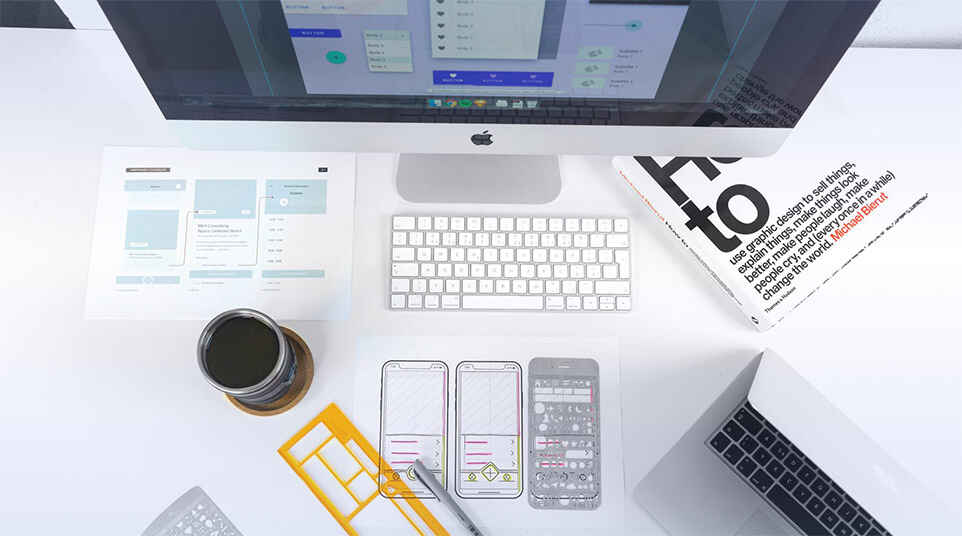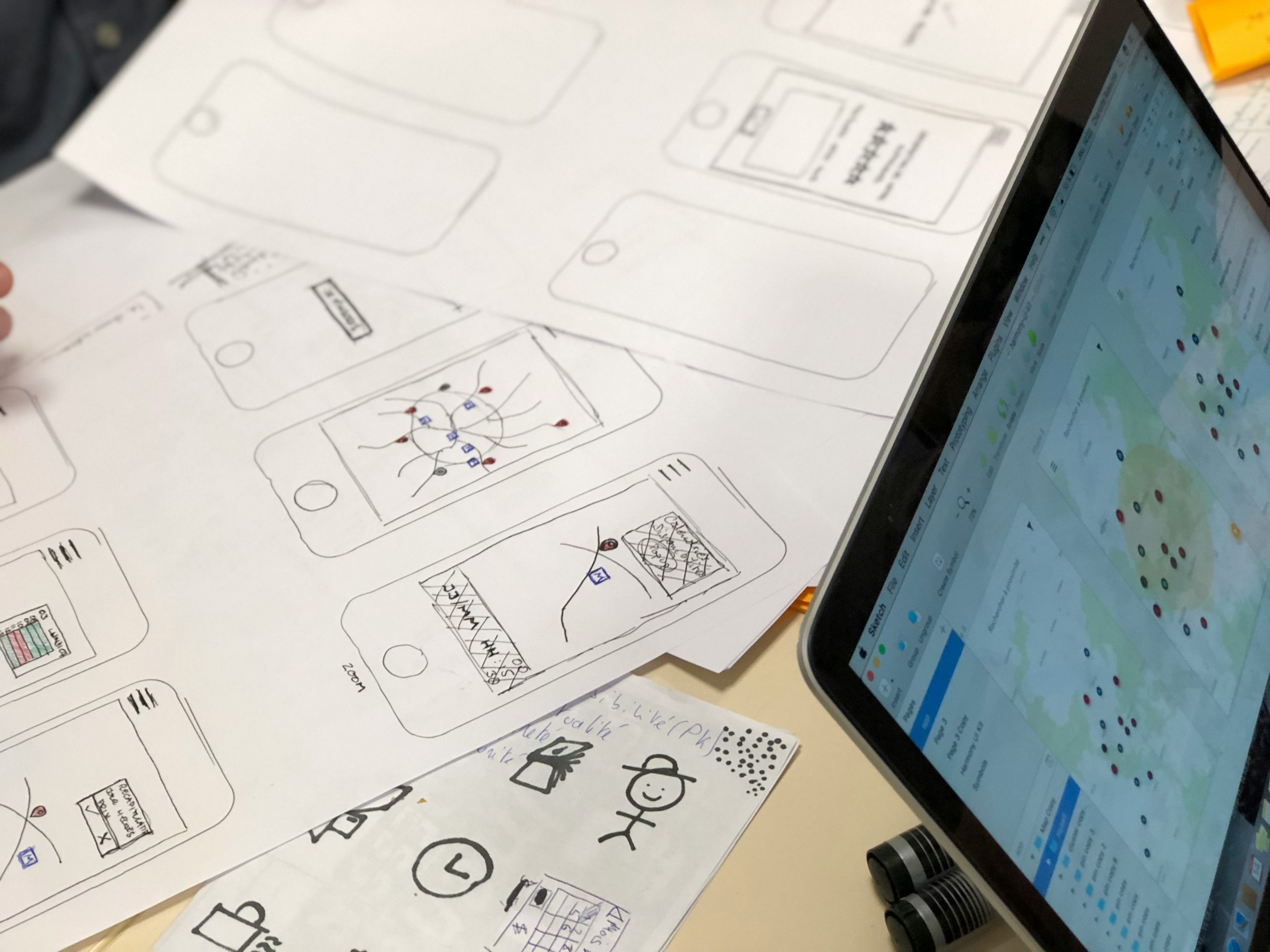We at Wesoftyou understand the importance of efficient project management in today’s fast-paced business world. As a software development company with a proven track record, we have helped numerous organizations create custom project management tools tailored to their specific needs. One question that often arises during these discussions is, “How much does it cost to develop a project management tool?” In this article, we will delve into the various factors that influence the cost of development and provide a breakdown of the associated expenses.
Understanding the Basics of a Project Management Tool
A project management tool is a software application designed to help teams plan, organize, and execute projects effectively. It provides a centralized platform where team members can collaborate, track progress, and manage tasks, ensuring that projects are completed on time and within budget. From our experience, we have found that a well-designed project management tool can significantly enhance efficiency and productivity in the workplace.
Defining a Project Management Tool
Before diving into the cost aspects, it is essential to have a clear understanding of what a project management tool entails. In its simplest form, a project management tool consists of various modules and features that aid in project planning, task assignment, resource allocation, time tracking, and communication. The specific requirements of a project management tool can vary depending on the industry and the complexity of the projects being managed.
When it comes to project planning, a project management tool allows teams to break down a project into smaller tasks, assign responsibilities, and set deadlines. This helps in creating a clear roadmap and ensures that everyone is on the same page. Additionally, the tool enables resource allocation, where team members can be assigned to specific tasks based on their skills and availability. This ensures that the right people are working on the right tasks, maximizing efficiency and minimizing bottlenecks.
Furthermore, a project management tool facilitates time tracking, allowing team members to log their hours spent on each task. This helps in monitoring progress, identifying any delays, and making necessary adjustments to stay on track. The tool also provides a platform for seamless communication among team members, enabling them to share updates, ask questions, and provide feedback in real-time. This fosters collaboration and ensures that everyone is aligned towards the project’s goals.
Core Features of a Project Management Tool
To develop a functional project management tool, it is crucial to identify and prioritize the core features that will address the unique needs of your organization. Some common features include task management, project analytics, file sharing, team collaboration, and reporting. The more complex the features required, the higher the development cost will be. It is essential to strike a balance between functionality and cost-effectiveness.
Task management is one of the fundamental features of a project management tool. It allows teams to create, assign, and track tasks throughout the project lifecycle. This ensures that everyone knows what needs to be done, by whom, and by when. Additionally, project analytics provide valuable insights into the progress and performance of the project. It enables teams to monitor key metrics, such as task completion rates, resource utilization, and project milestones, helping them make data-driven decisions and identify areas for improvement.
File sharing is another essential feature that allows team members to upload, store, and access project-related documents in a centralized location. This eliminates the need for multiple versions of files and ensures that everyone has access to the most up-to-date information. Team collaboration features, such as discussion boards and real-time messaging, promote effective communication and foster a sense of teamwork. Lastly, reporting features enable teams to generate comprehensive reports on project status, progress, and performance. These reports can be shared with stakeholders to provide transparency and keep them informed.
In conclusion, a project management tool is a powerful asset for any organization looking to streamline their project management processes. By providing a centralized platform for collaboration, task management, resource allocation, time tracking, and communication, it enhances efficiency and productivity. Understanding the core features and customizing them to meet the specific needs of your organization is key to maximizing the benefits of a project management tool.
Factors Influencing the Cost of Development
Now that we have a solid understanding of project management tools, let us explore the factors that influence the cost of their development. Developing a project management tool involves various considerations, and understanding these factors can help you make informed decisions.
Complexity of the Tool
The complexity of the project management tool plays a significant role in determining the overall cost. A basic tool with essential features will be less expensive to develop than a highly customized tool built to handle complex project structures or unique industry requirements. The complexity of a tool can be assessed based on factors such as the number of features, integration requirements, and scalability. It is important to assess the complexity of your project management needs to accurately estimate the corresponding development cost.
For example, if your organization deals with large-scale projects involving multiple teams and stakeholders, a complex tool with advanced collaboration features and robust reporting capabilities may be necessary. On the other hand, if you have smaller projects with fewer team members, a simpler tool with basic task management and communication features may suffice. Evaluating the complexity of your project management requirements can help you determine the level of investment needed for development.
Customization Requirements
Every organization has its own set of processes, workflows, and branding guidelines. If you require extensive customization options to align the project management tool with your existing systems and practices, the development cost will increase accordingly. Customization can involve tailoring the user interface, adding specific functionalities, integrating with other tools or platforms, and incorporating branding elements.
Our team at Wesoftyou understands the importance of striking a balance between customization and cost. We can help you assess your customization needs and provide recommendations on the most cost-effective approach. By leveraging our expertise, you can ensure that the project management tool meets your specific requirements without breaking the bank.
For instance, if your organization follows a specific project management methodology such as Agile or Waterfall, customizing the tool to align with these methodologies can improve efficiency and user adoption. Similarly, if you have branding guidelines that need to be reflected in the tool’s design, our team can work closely with you to incorporate the desired branding elements while keeping the development cost in check.
Technology Stack Used
The choice of technology stack has a significant impact on the development cost. Depending on the tool’s complexity and performance requirements, different technology stacks may be more suitable. While opting for the latest technologies can enhance the tool’s functionality and user experience, it may also increase the development and maintenance cost.
Our experienced developers can guide you in selecting the right technology stack that aligns with your goals and budget. We consider factors such as scalability, security, ease of maintenance, and compatibility with your existing infrastructure. By leveraging our expertise, you can ensure that the chosen technology stack not only meets your functional requirements but also optimizes the development cost.
For example, if you have a preference for open-source technologies, our team can recommend suitable frameworks and libraries that can help reduce licensing costs. On the other hand, if your organization has specific security requirements, we can suggest technologies that offer robust security features while keeping the development cost within your budget.
By carefully evaluating the factors influencing the cost of development, you can make informed decisions and ensure that your project management tool is developed within the desired budget. At Wesoftyou, we are committed to delivering high-quality, cost-effective solutions that meet your unique requirements.
Breakdown of Development Costs
Now, let’s delve into the specific costs you can expect during the development process of a project management tool.

Developing a project management tool involves various stages and components that contribute to its overall functionality and user experience. In this breakdown, we will explore three key areas of development costs: design and user interface, backend development, and testing and quality assurance.
Design and User Interface Costs
The design and user interface are key elements that contribute to the usability and user experience of the tool. A well-designed tool ensures ease of use and minimizes the learning curve for your team members. The design process involves creating wireframes, mockups, and prototypes to visualize the tool’s layout and interactions.
During the design phase, designers work closely with stakeholders to understand their requirements and preferences. They consider factors such as the complexity of the tool, the number of screens and interactions, and the need for custom branding. Investing in intuitive and visually appealing design is crucial to maximizing user adoption and productivity.
Design costs can vary depending on the scope of the project and the expertise of the designers involved. It is important to allocate sufficient resources to this stage to ensure a polished and user-friendly interface.
Backend Development Costs
The backend development involves setting up the server infrastructure, database management, and integrating the various functionalities of the tool. This part of the development process can be complex, as it requires careful planning and implementation to ensure reliability, scalability, and security.
Backend developers work on writing code that handles data storage, retrieval, and manipulation. They also integrate external services and APIs to enhance the tool’s functionality. The complexity of the tool and the technology stack chosen can significantly impact the backend development costs.
It is important to allocate sufficient time and resources to the backend development stage to ensure a robust and efficient tool. Skilled backend developers and thorough testing are crucial to delivering a reliable and scalable solution.
Testing and Quality Assurance Costs
Thorough testing and quality assurance are essential to ensure that the project management tool functions flawlessly. The testing process includes unit testing, integration testing, system testing, and user acceptance testing.
During unit testing, individual components of the tool are tested to ensure they work as intended. Integration testing focuses on verifying that different modules of the tool work together seamlessly. System testing involves testing the tool as a whole to ensure all functionalities are working correctly. User acceptance testing allows real users to test the tool and provide feedback.
These iterations help identify and rectify any bugs or issues before the tool is deployed. Testing and quality assurance costs should not be overlooked, as they play a vital role in delivering a robust and reliable tool. Skilled testers, test environments, and testing tools are essential to ensure thorough and efficient testing.
By considering these three key areas of development costs – design and user interface, backend development, and testing and quality assurance – you can better estimate the overall investment required for developing a project management tool. Remember, investing in these areas will contribute to the success and user satisfaction of your tool.
Maintenance and Update Costs
Development of the project management tool is just the beginning of the journey. After the tool is deployed, ongoing maintenance and updates are required to keep it up-to-date and functional. These costs include regular updates and upgrades, server and hosting expenses, and customer support and service costs.
When it comes to maintaining and updating your project management tool, there are several factors to consider. Let’s take a closer look at each of these costs and how they contribute to the overall success of your tool.
Regular Updates and Upgrades
As technology and user requirements evolve, it is necessary to incorporate new features and improvements into your project management tool. Regular updates and upgrades ensure that your tool remains competitive and delivers an optimal user experience. It is crucial to budget for these costs to ensure the longevity and relevance of your tool.
When planning for updates and upgrades, it’s important to consider the time and resources required. This includes conducting research, gathering user feedback, and collaborating with developers to implement the necessary changes. By staying proactive in this area, you can ensure that your project management tool continues to meet the evolving needs of your users.
Server and Hosting Costs
The server and hosting costs are recurring expenses that need to be considered. Depending on the size of your organization, the number of users, and the required level of security and performance, the hosting costs may vary. It is essential to choose a reliable hosting provider to ensure the smooth functioning of your project management tool.
When selecting a hosting provider, it’s important to consider factors such as uptime guarantees, scalability options, and data backup and recovery processes. By investing in a robust hosting solution, you can minimize downtime and provide a seamless experience for your users. Additionally, regularly monitoring server performance and optimizing resource allocation can help optimize costs and ensure efficient operations.
Customer Support and Service Costs
Providing excellent customer support is essential to maximize user satisfaction and adoption. The customer support and service costs include personnel, training, and tools required to address user queries and issues. Allocating resources to offer prompt and effective customer support can significantly impact the success of your project management tool.
When it comes to customer support, it’s important to establish clear communication channels and response time expectations. This may involve setting up a dedicated support team, implementing a ticketing system, or providing self-service resources such as FAQs and knowledge bases. By investing in customer support, you can build trust with your users and foster long-term relationships.
In conclusion, while the development of a project management tool is a significant milestone, ongoing maintenance and updates are crucial for its success. Regular updates and upgrades, server and hosting costs, and customer support and service costs all contribute to the overall functionality and user satisfaction of your tool. By carefully considering and budgeting for these costs, you can ensure that your project management tool remains relevant and competitive in the ever-evolving landscape of project management.
Cost-Saving Strategies for Developing a Project Management Tool
Developing a project management tool can be a significant investment, but there are various strategies you can employ to minimize expenses without compromising on functionality and quality. By carefully considering these strategies, you can ensure that your project management tool is not only cost-effective but also meets your organization’s specific needs.
Choosing the Right Development Team
Partnering with an experienced and reliable software development company is crucial when developing a project management tool. Companies like Wesoftyou have the necessary expertise to navigate the complexities of development and can help you customize off-the-shelf solutions or build a tool from scratch. By collaborating with a reliable development team, you can ensure that your tool is delivered on time, within budget, and with the required level of quality.
When selecting a development team, it is essential to consider their track record, expertise, and ability to work within your budget constraints. By choosing the right team, you can leverage their knowledge and experience to make informed decisions throughout the development process, ultimately leading to a cost-effective solution.
Prioritizing Essential Features
Instead of aiming for an all-in-one solution, it is advisable to prioritize essential features that align with your core project management needs. By focusing on functionalities that are crucial to your organization, you can develop a cost-effective tool without unnecessary bells and whistles.
During the planning phase, it is essential to engage stakeholders and gather their input to identify the key features that will provide the most value. By involving the right people in the decision-making process, you can ensure that the tool meets their requirements while keeping development costs in check.
Additionally, by adopting an agile development approach, you can release an initial version of the tool with the essential features and then continuously iterate and add enhancements based on user feedback and evolving requirements. This iterative approach allows you to control costs while delivering a tool that evolves with your organization.
Opting for Open Source Technologies
Open source technologies offer cost-efficient alternatives to proprietary software solutions. Leveraging open source frameworks and platforms can significantly reduce development costs without compromising on quality.
At Wesoftyou, our team has expertise in open source technologies and can guide you in selecting the right options for your project management tool. By utilizing open source technologies, you can benefit from a vast community of developers, continuous updates, and a wide range of available plugins and extensions.
Furthermore, open source technologies often have robust security measures in place, as they are continuously tested and improved by a large community of developers. This ensures that your project management tool is not only cost-effective but also secure and reliable.
By implementing these cost-saving strategies, you can develop a project management tool that meets your organization’s needs while staying within your budget. Remember, it is crucial to carefully plan, prioritize, and collaborate with the right development team to ensure a successful and cost-effective outcome.
Conclusion
Developing a project management tool involves various factors that influence the overall cost. By understanding the basics of a project management tool, evaluating the influencing factors, and employing cost-saving strategies, you can develop a tool that meets your organization’s needs without breaking the bank. We at Wesoftyou are here to guide you through the entire development process, from planning to deployment and maintenance. Contact us today for a free consultation or project estimation, and let us help you streamline your project management workflows.
FAQ
A project management tool is a software application designed to help teams plan, organize, and execute projects effectively. It provides a centralized platform where team members can collaborate, track progress, and manage tasks, ensuring that projects are completed on time and within budget.
The cost of developing a project management tool depends on various factors such as complexity, customization requirements, and technology stack used. It is recommended to consult with a software development company to get a customized estimation based on your specific needs.
You can save costs by prioritizing essential features, opting for open source technologies, and choosing the right development team who can guide you through the process and deliver within your budget.
Maintenance costs for a project management tool include regular updates and upgrades, server and hosting expenses, and customer support and service costs. It is important to budget for these costs to ensure the longevity and relevance of your tool.
WeSoftYou is a reputable software development company with expertise in developing custom project management tools. Our experienced team can help you navigate the complexities of development, customize solutions to your specific needs, and deliver a high-quality tool within your budget.
Contact us at WeSoftYou today for a free consultation or project estimation. Let us help you streamline your project management workflows and optimize your team’s productivity.





















